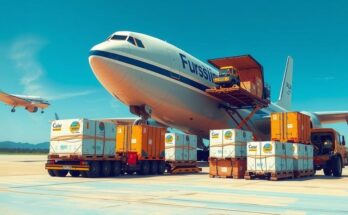Following eleven years since its disappearance, the Malaysian government has greenlit a renewed search for MH370. Ocean Infinity, with its advanced technology and expertise, is leading the operation in a targeted area of the southern Indian Ocean. The process involves complex underwater operations and aims to retrieve key data from the aircraft’s black boxes if the wreckage is found. The operation timeline is projected to last up to 18 months, with significant challenges due to seafloor conditions.
The Malaysian government has initiated a renewed search for Malaysia Airlines Flight MH370, more than eleven years after its disappearance which resulted in the loss of 239 lives. In December of the previous year, Malaysia endorsed a proposal from the seabed exploration company, Ocean Infinity, which previously attempted a search in 2018 but was unsuccessful. The current search effort employs updated advanced technology and is concentrated in a targeted region of the southern Indian Ocean, approximately 1,500 kilometers west of Perth.
The area designated for the search is roughly equivalent to the size of metropolitan Sydney. This area was identified through collaboration with specialists who analyzed various data, including satellite imagery and wreckage found along the Indian Ocean coast. Ocean Infinity’s new venture aims to locate the missing debris utilizing a sophisticated array of high-tech tools, which include a state-of-the-art offshore support vessel, the Armada 7806, launched in 2023.
The Armada 7806 is outfitted with a fleet of advanced autonomous underwater vehicles developed by Kongsberg, capable of working independently at depths up to 6,000 meters for extended periods of time. These vehicles employ cutting-edge sonar technology, such as sidescan, synthetic aperture, multibeam, and sub-bottom profiling sonar. These systems facilitate precise underwater mapping and object detection by utilizing sound pulses for accurate imaging of the seafloor and its features.
To confirm possible targets, camera systems and lights on the underwater vehicles will be employed. Once a target of interest is identified through sonar detection, the mission parameters will adjust for closer inspections that facilitate detailed imagery capture. The search will proceed to this next phase only after confirming the sonar target, ensuring efficient data gathering in the deeper regions of the ocean.
Since the last search in 2018, Ocean Infinity has significantly advanced its marine robotics and data analytics technologies, enabling efficient simultaneous deployments of numerous vehicles on the seabed. The comprehensive collection of data will yield detailed mapping of the search area once the vessels’ data is processed.
Conducting operations in such difficult conditions above and below the surface presents notable challenges. Weather on the surface can impede the support vessel operations, while the underwater vehicles must navigate complex terrain. The search operation is projected to take up to 18 months, with optimal weather conditions anticipated from January to April. Should the search be successful, the Malaysian government has committed to a payment of USD 70 million to Ocean Infinity. Subsequent efforts would then focus on retrieving the aircraft’s black boxes to help illuminate the moments leading up to the tragedy. If unsuccessful, Ocean Infinity will receive no payment, potentially leaving the investigation at a standstill.
In conclusion, the renewed search for MH370 represents a significant effort to resolve one of aviation’s greatest mysteries. Utilizing advanced technology and an experienced team, Ocean Infinity aims to locate the wreckage within a carefully defined search area. Challenging underwater conditions and a rigorous operational timeline highlight the complexity of the endeavor. The outcome may yield critical insights if the wreckage is found and the black boxes are retrieved, while a lack of success could stall the investigation indefinitely.
Original Source: www.hindustantimes.com




